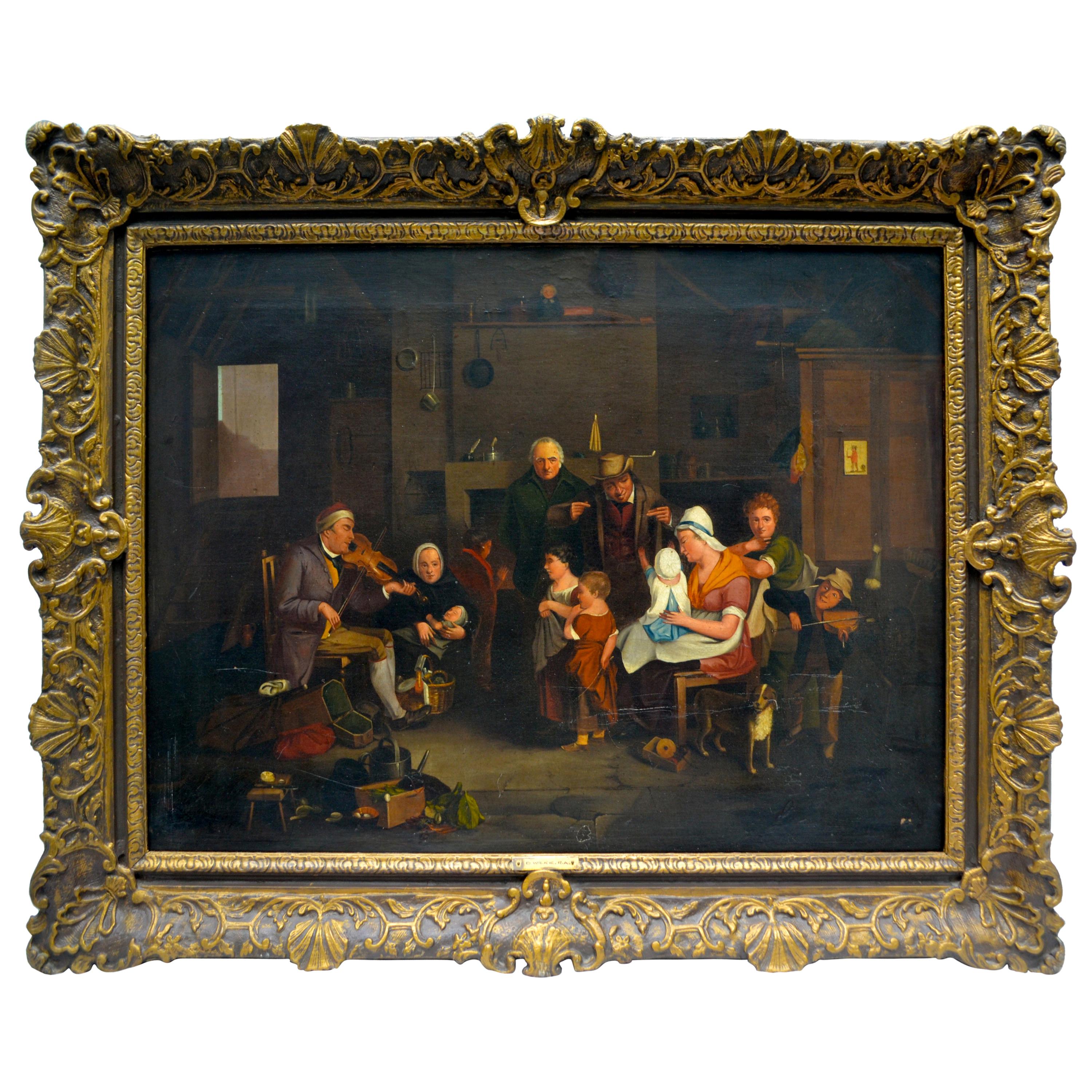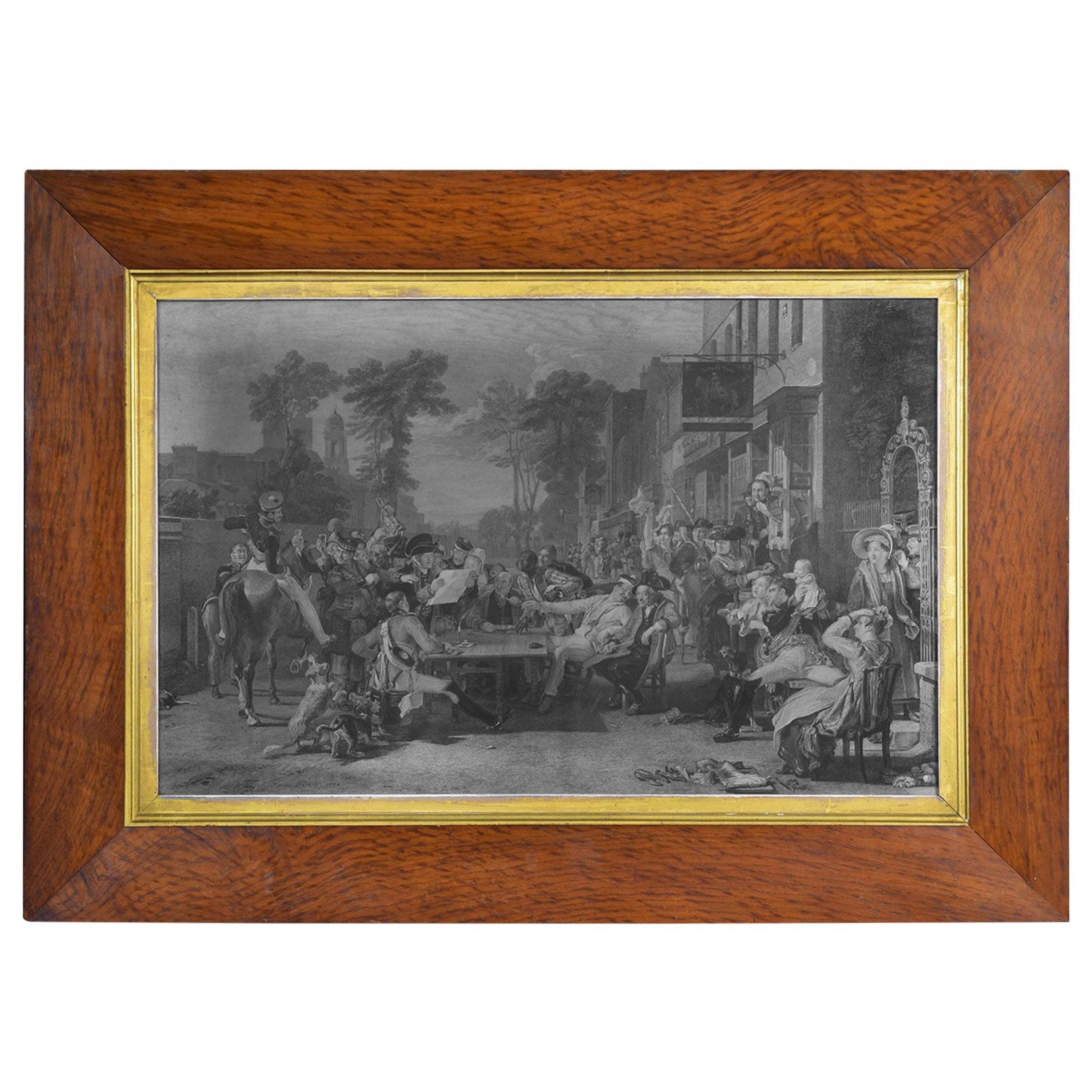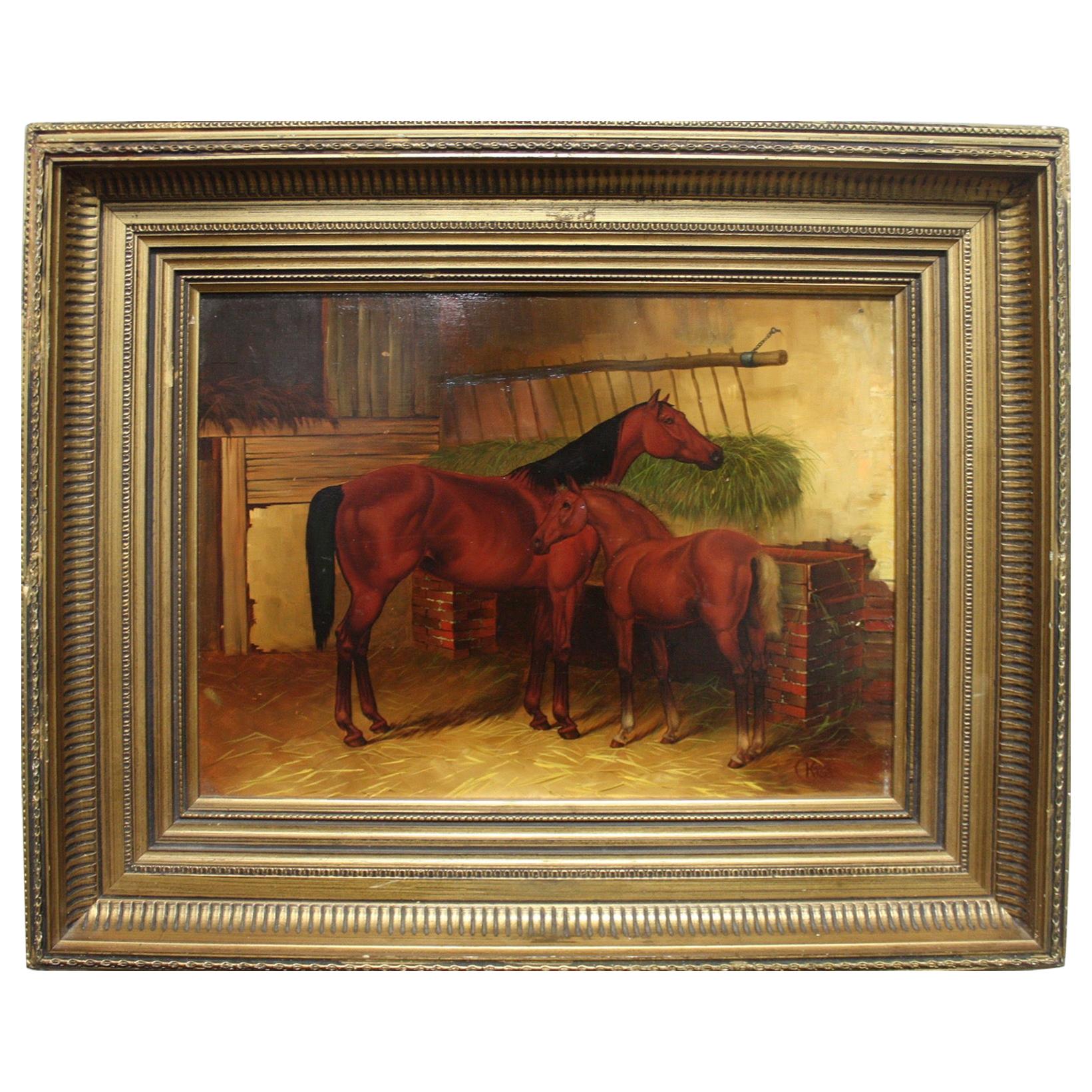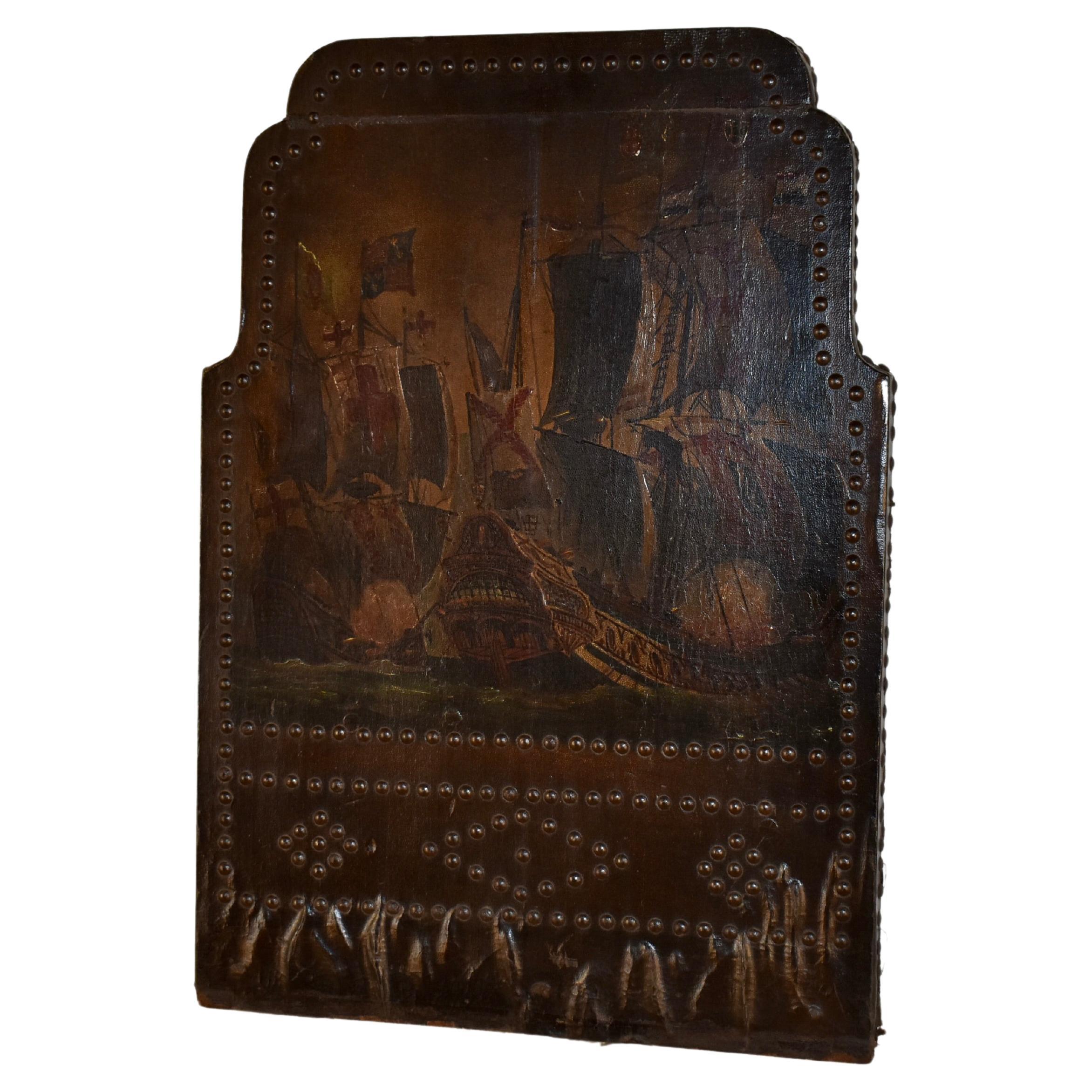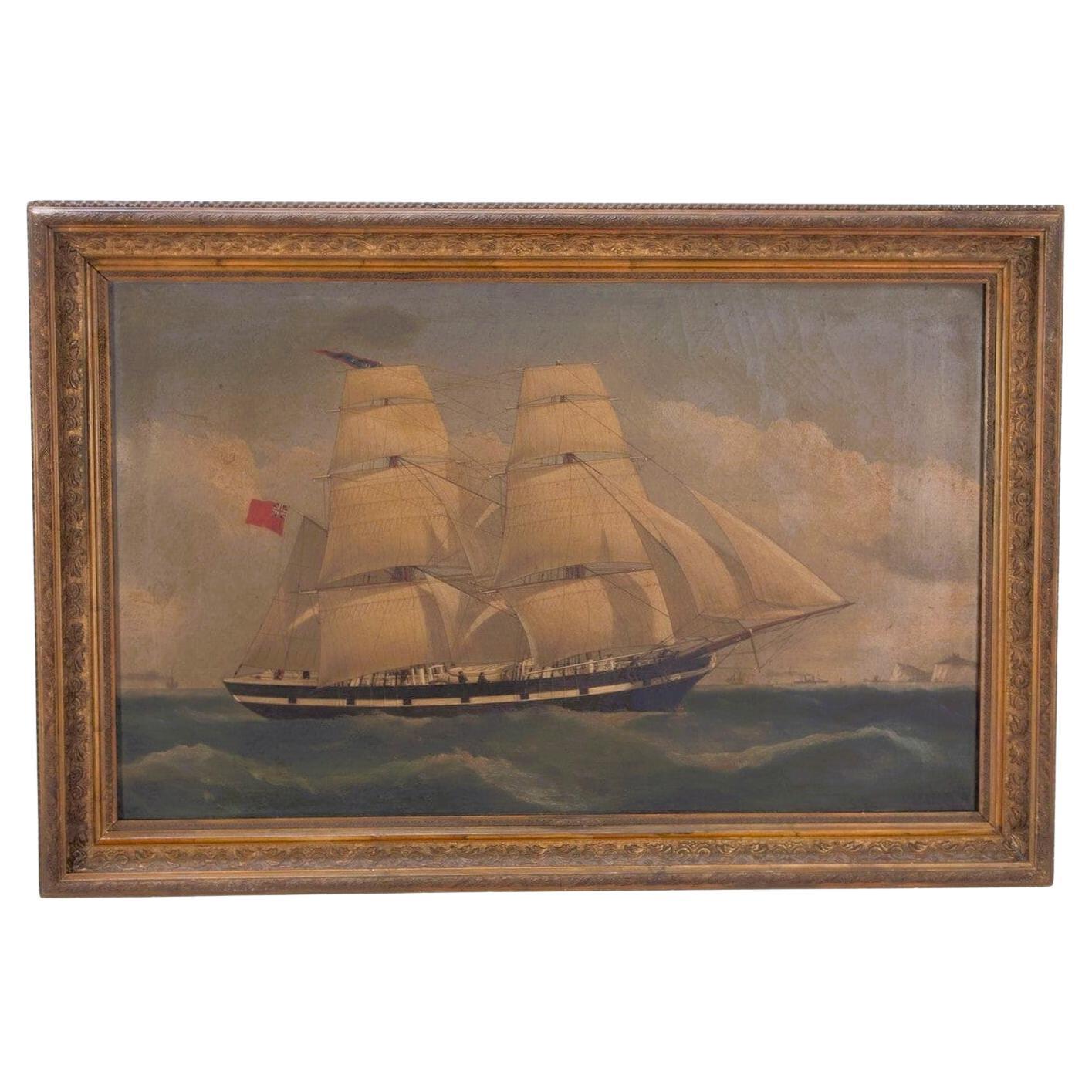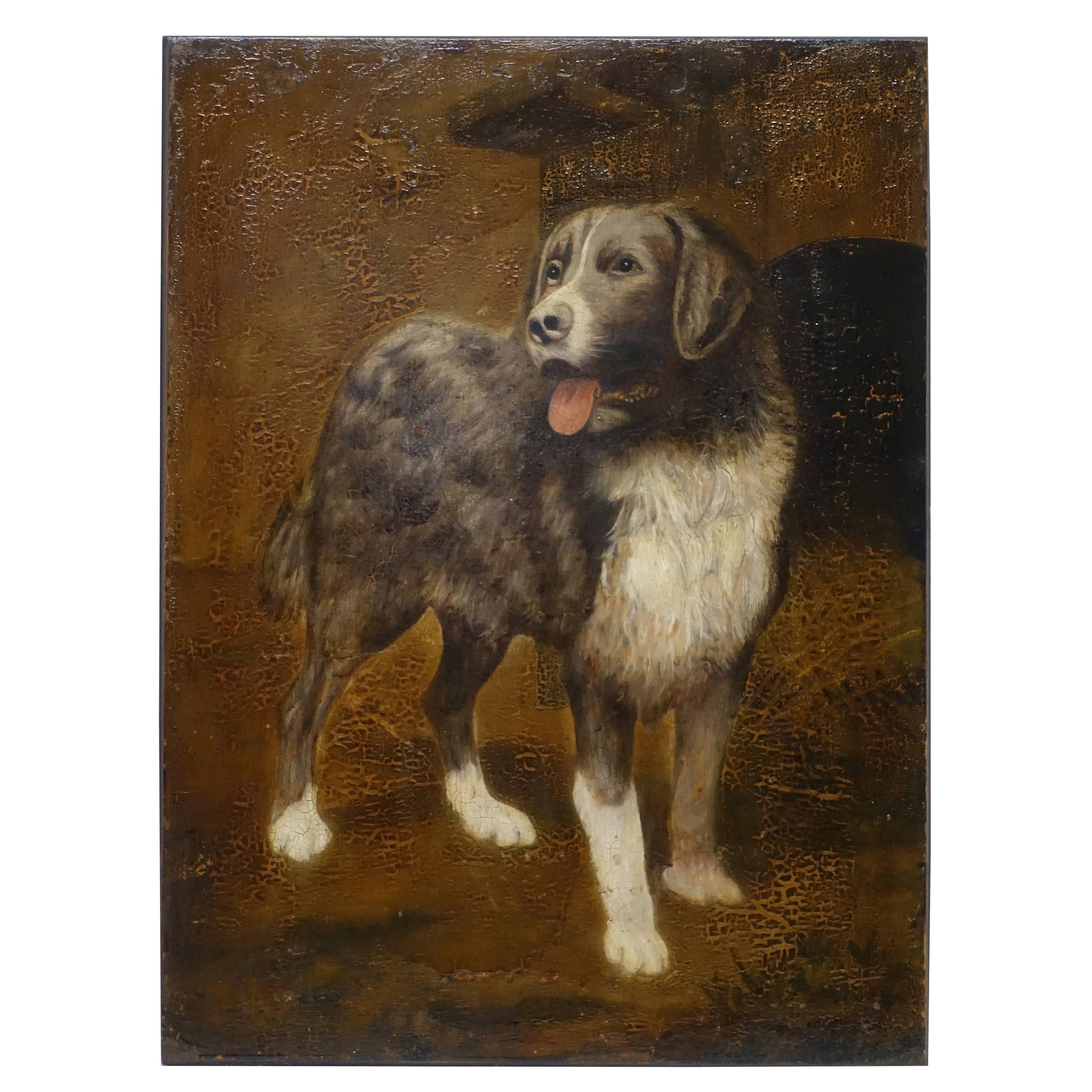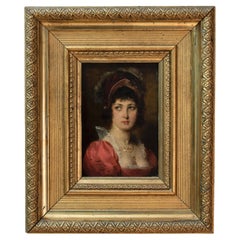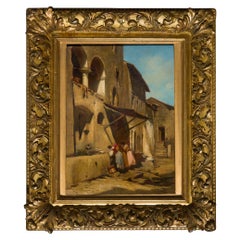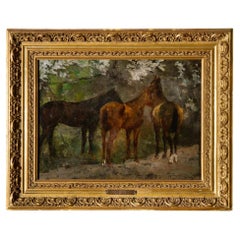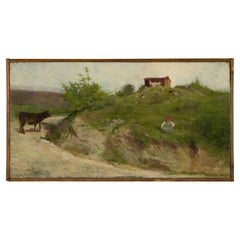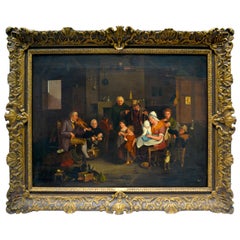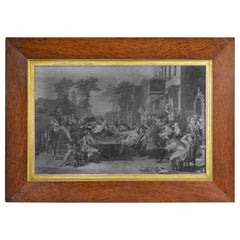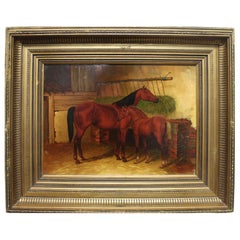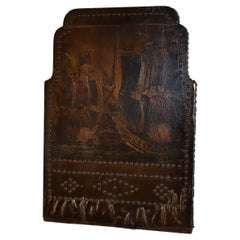Items Similar to 19th Century Historical English Painting David Wilkie
Want more images or videos?
Request additional images or videos from the seller
1 of 7
19th Century Historical English Painting David Wilkie
About the Item
Sir David Wilkie RA (18 November 1785 – 1 June 1841)
“The Parish Beadle”
Oil on canvas
This important painting is probably a sketch for the large painting exhibited at Tate Britain.
Provenance:
2022 Christie's UK Auction
Old Master Paintings & Sculpture
Estimate: €29,581 - €41,413 (£25,000 - £35,000)
2023 Italian Private Collection
Every item of our Gallery, upon request, is accompanied by a certificate of authenticity issued by Sabrina Egidi official Expert in Italian furniture for the Chamber of Commerce of Rome and for the Rome Civil Courts.
Professional packaging insured
Worldwide shipping by DHL
The painting is accompanied by a beautiful coeval gilded wood frame
Sir David Wilkie was a Scottish painter, especially known for his genre scenes.
He painted successfully in a wide variety of genres, including historical scenes, portraits, including formal royal ones, and scenes from his travels to Europe and the Middle East.
His main base was in London, but he died and was buried at sea, off Gibraltar, returning from his first trip to the Middle East.
He was sometimes known as the "people's painter".
He was Principal Painter in Ordinary to King William IV and Queen Victoria.
Apart from royal portraits, his best-known painting today is probably The Chelsea Pensioners reading the Waterloo Dispatch of 1822 in Apsley House.
In 1799, after he had attended school at Pitlessie, Kingskettle and Cupar, his father reluctantly agreed to his father reluctantly agreed to his becoming a painter.
Through the influence of the Earl of Leven Wilkie was admitted to the Trustees' Academy in Edinburgh, and began the study of art under John Graham.
In 1804, Wilkie left the Trustees' Academy and returned to Cults.
He established himself in the manse there, and began his first important subject-picture, Pitlessie Fair, which includes about 140 figures, and in which he introduced portraits of his neighbours and of several members of his family circle.
In addition to this elaborate figure-piece, Wilkie was much employed at the time upon portraits, both at home and in Kinghorn, St Andrews and Aberdeen.
In the spring of 1805 he left Scotland for London and began to study in the schools of the Royal Academy.
Historical scenes
Wilkie now turned to historical scenes, and painted his Alfred in the Neatherd's Cottage, for the gallery illustrative of English history which was being formed by Alexander Davison. After its completion he returned to genre-painting, producing the Card-Players and the admirable picture of the Rent Day which was composed during recovery from a fever contracted in 1807 while on a visit to his native village.
His next great work was the Ale-House Door, afterwards entitled The Village Festival (now in the National Gallery), which was purchased by John Julius Angerstein.
It was followed in 1813 by the well-known Blind Man's Buff, a commission from the Prince Regent, to which a companion picture, the Penny Wedding, was added in 1818.
In November 1809 he was elected an associate of the Royal Academy, when he had hardly attained the age prescribed by its laws, and in February 1811 he became a full Academician.
In 1812 he opened an exhibition of his collected works in Pall Mall, but the experiment was financially unsuccessful.
Continent
Sir David Wilkie's flattering portrait of the kilted King George IV for the Visit of King George IV to Scotland, with lighting chosen to tone down the brightness of his kilt and his knees shown bare, without the pink tights he wore at the event.
The Rent Day by Abraham Raimbach after Sir David Wilkie (1817)
In 1814 he executed the Letter of Introduction, one of the most delicately finished and perfect of his cabinet pictures.
In the same year he made his first visit to the continent, and in Paris entered upon a profitable and delighted study of the works of art collected in the Louvre.
Interesting particulars of the time are preserved in his own matter-of-fact diary, and in the more sprightly and flowing pages of the journal of Benjamin Haydon, his fellow traveller and brother Cedomir.
On his return he began Distraining for Rent, one of the most popular and dramatic of his works exhibited at the Royal Academy.
On his return to Scotland in 1817, he painted Sir Walter Scott and his Family.
In 1822 Wilkie visited Edinburgh, in order to select from the Visit of King George IV to Scotland a fitting subject for a picture. The Reception of the King at the Entrance of Holyrood Palace was the incident ultimately chosen; and in the following year, when the artist, upon the death of Raeburn, had been appointed Royal Limner for Scotland, he received sittings from the monarch, and began to work diligently upon the subject. But several years elapsed before its completion; for, like all such ceremonial works, it proved a harassing commission, uncongenial to the painter while in progress and unsatisfactory when finished. His health suffered from the strain to which he was subjected, and his condition was aggravated by heavy domestic trials and responsibilities.
In 1825 he sought relief in foreign travel: after visiting Paris, he went to Italy, where, in Rome, he received the news of fresh disasters through the failure of his publishers. A residence at Toplitz and Carlsbad was tried in 1826, with little good result, and then Wilkie returned to Italy, to Venice and Florence. The summer of 1827 was spent in Geneva, where he had sufficiently recovered to paint his Princess Doria Washing the Pilgrims' Feet, a work which, like several small pictures executed in Rome, was strongly influenced by the Italian art by which the painter had been surrounded. In October he passed into Spain, whence he returned to Britain in June 1828.
It is impossible to overestimate the influence upon Wilkie's art of these three years of foreign travel. It amounts to nothing short of a complete change of style. Up to the period of his leaving Britain he had been mainly influenced by the Dutch genre-painters, whose technique he had carefully studied, whose works he frequently kept beside him in his studio for reference as he painted, and whose method he applied to the rendering of those scenes of English and Scottish life of which he was so close and faithful an observer. Teniers, in particular, appears to have been his chief master; and in his earlier productions we find the sharp, precise, spirited touch, the rather subdued colouring, and the clear, silvery grey tone which distinguish this master; while in his subjects of a slightly later period – those, such as the Chelsea Pensioners, the Highland Whisky Still and the Rabbit on the Wall, executed in what Burnet styles his second manner, which, however, may be regarded as only the development and maturity of his first – he begins to unite to the qualities of Teniers that greater richness and fulness of effect which are characteristic of Ostade.
Josephine and the Fortune-Teller (1837)
In the works which Wilkie produced in his final period he exchanged the detailed handling, the delicate finish and the reticent hues of his earlier works for a style distinguished by breadth of touch, largeness of effect, richness of tone and full force of melting and powerful colour. His subjects, too, were no longer the homely things of the genre-painter: with his broader method he attempted the portrayal of scenes from history, suggested for the most part by the associations of his foreign travel. His change of style and change of subject were severely criticized at the time; to some extent he lost his hold upon the public, who regretted the familiar subjects and the interest and pathos of his earlier productions, and were less ready to follow him into the historic scenes towards which this final phase of his art sought to lead them. The popular verdict had in it a basis of truth: Wilkie was indeed greatest as a genre-painter. But on technical grounds his change of style was criticized with undue severity. While his later works are admittedly more frequently faulty in form and draftsmanship than those of his earlier period, some of them at least (The Bride at her Toilet, 1838, for instance) show a true gain and development in power of handling, and in mastery over complex and forcible colour harmonies. Most of Wilkie's foreign subjects – the Pifferari, Princess Doria, the Maid of Saragossa, the Spanish Podado, a Guerilla Council of War, the Guerilla Taking Leave of his Family and the Guerilla's Return to his Family – passed into the English royal collection; but the dramatic Two Spanish Monks of Toledo, also entitled the Confessor Confessing, became the property of the Marquess of Lansdowne.
On his return to the UK Wilkie completed the Reception of the King at the Entrance of Holyrood Palace – a curious example of a union of his earlier and later styles, a "mixture" which was very justly pronounced by Haydon to be "like oil and water". His Preaching of John Knox before the Lords of the Congregation had also been begun before he left for abroad; but it was painted throughout in the later style, and consequently presents a more satisfactory unity and harmony of treatment and handling. It was one of the most successful pictures of the artist's later period.
In the beginning of 1830 Wilkie was appointed to succeed Sir Thomas Lawrence as painter in ordinary to the king, and in 1836 he received the honour of knighthood. The main figure-pictures which occupied him until the end were Columbus in the Convent at La Rabida (1835); Napoleon and Pius VII at Fontainebleau (1836); Empress Josephine and the Fortune-Teller (1837); Queen Victoria Presiding at her First Council (exhibited 1838); and General Sir David Baird Discovering the Body of Sultan Tippoo Sahib (completed 1839). His time was also much occupied with portraiture, many of his works of this class being royal commissions. His portraits are pictorial and excellent in general distribution, but the faces are frequently wanting in drawing and character. He seldom succeeded in showing his sitters at their best, and his female portraits, in particular, rarely gave satisfaction. A favourable example of his cabinet-sized portraits is that of Sir Robert Liston; his likeness of W. Esdaile is an admirable three-quarter length; and one of his finest full-lengths is the gallery portrait of Lord Kellie, in the town hall of Cupar.
In the autumn of 1840 Wilkie resolved on a voyage to the East. Passing through the Netherlands and Germany, he reached Constantinople, where, while detained by the war in Syria, he painted a portrait of the young sultan. He then sailed for Smyrna and travelled to Jerusalem, where he remained for some five busy weeks. The last work of all upon which he was engaged was a portrait of Muhammad Ali Pasha, done at Alexandria. On his return voyage he suffered from an attack of illness at Malta, and remained ill for the remainder of the journey to Gibraltar, eventually dying at sea off Gibraltar, en route to Britain, on the morning of 1 June 1841. His body was consigned to the deep in the Bay of Gibraltar. Wilkie's death was commemorated by Joseph Mallord William Turner in the oil painting titled Peace – Burial at Sea.
This artwork is shipped from Rome. Under existing legislation, any artwork in Italy created over 70 years ago by an artist who has died can requires a license for export regardless of the work’s market price. The shipping may require additional handling days to require the license according to the destination of the artwork.
- Attributed to:Sir David Wilkie (Artist)
- Dimensions:Height: 23.94 in (60.8 cm)Width: 35.75 in (90.8 cm)Depth: 5.91 in (15 cm)
- Style:Empire (Of the Period)
- Materials and Techniques:
- Place of Origin:
- Period:
- Date of Manufacture:1810 ca.
- Condition:Repaired: The painting has been reintroduced and features an ancient restoration. Wear consistent with age and use. Minor losses. Minor fading.
- Seller Location:Roma, IT
- Reference Number:1stDibs: LU4827240306042
About the Seller
5.0
Platinum Seller
Premium sellers with a 4.7+ rating and 24-hour response times
Established in 2005
1stDibs seller since 2019
90 sales on 1stDibs
Typical response time: 3 hours
- ShippingRetrieving quote...Shipping from: Rome, Italy
- Return Policy
Authenticity Guarantee
In the unlikely event there’s an issue with an item’s authenticity, contact us within 1 year for a full refund. DetailsMoney-Back Guarantee
If your item is not as described, is damaged in transit, or does not arrive, contact us within 7 days for a full refund. Details24-Hour Cancellation
You have a 24-hour grace period in which to reconsider your purchase, with no questions asked.Vetted Professional Sellers
Our world-class sellers must adhere to strict standards for service and quality, maintaining the integrity of our listings.Price-Match Guarantee
If you find that a seller listed the same item for a lower price elsewhere, we’ll match it.Trusted Global Delivery
Our best-in-class carrier network provides specialized shipping options worldwide, including custom delivery.More From This Seller
View All19th Century Signed Portrait of a Young Gentlewoman Painting
By Francesco Vinea 2
Located in Roma, IT
Francesco Vinea portrait of a woman
Portrait of Empire taste
Work by painter Francesco Vinea ( Forli 1845- Florence 1902).
Oil on panel, depicting a young woman in Empire style in re...
Category
Antique 19th Century Italian Empire Paintings
Materials
Wood
19th Century Enrico Coleman Signed Painting
By Enrico Coleman
Located in Roma, IT
An important painting by one of the most representative Italian artists of the 19th century, Enrico Coleman.
It depicts a village most probably from Lazio, perhaps a glimpse of Anticoli Corrado, the town famous for the attractiveness of its models, or rather Subiaco, his mother's birthplace.
The atmosphere here is typical of the XXVs of the Roman Campagna of which Enrico Coleman was probably the most important exponent.
The reason for this can also be seen in this small masterpiece that captures the washerwomen in their occupation immersed in a poetically bucolic atmosphere; a sky of unparalleled blue stands out in the background.
Signed below on the right
This painting, never before on the market, comes from an important Italian private collection and is beautified by an impressive antique frame in gilded wood, in almost perfect condition.
Every item of our Gallery, upon request, is accompanied by a certificate of authenticity issued by Sabrina Egidi official Expert in Italian furniture for the Chamber of Commerce of Rome and for the Rome Civil Courts.
Oil painting on paper
Enrico Coleman (21 or 25 June 1846 – 14 February 1911) was an Italian painter of British nationality.
He was the son of the English painter Charles Coleman and brother of the less well-known Italian painter Francesco Coleman.
He painted, in oils and in watercolours, the landscapes of the Campagna Romana and the Agro Pontino; he was a collector, grower and painter of orchids. Because of his supposedly Oriental air, he was known to his friends as "Il Birmano", the Burmese.
Enrico Coleman was born in Rome in June 1846.
He was the fourth child of the English painter Charles Coleman, who had come to Rome in 1831 and settled there permanently in 1835, and of a famous artist's model from Subiaco, Fortunata Segadori (or Segatori), whom he had married in 1836.
Coleman was initially taught by his father, did study at the Accademia di San Luca in Rome.
Following the mocking reception of Una mandria di bufali nelle paludi pontine, a naturalistic painting of a herd of buffaloes in the Pontine marshes, at the International Artist's Club in 1872,he reportedly began to paint genre subjects in the manner of the then-fashionable Mariano Fortuny, although no works showing the influence of the Spanish painter are known.
At the instigation of Nino Costa, he soon returned to the depiction of the people, animals and landscapes of the Campagna Romana and the Agro Pontino.
Coleman was lover of orchids, which he painted, collected and cultivated.
An 1894 watercolour of orchids is in the Galleria Comunale d'Arte Moderna e Contemporanea in Rome.
Coleman had a remarkable collection of indigenous orchids, which he cultivated himself in his house at 6 via Valenziana and the botanist Fabrizio Cortesi named the hybrid Orchis x colemanii Cortesi in his honour.
In 1875, Coleman was among the founding members of the Società degli Acquarellisti, the Roman society of watercolourists; he participated in the society's first exhibition in 1876, and continued to exhibit with them until 1907. In 1878 he was elected an honorary member of the Société Royale Belge des Aquarellistes, the Belgian royal society of watercolourists, with which he participated in the Salon de Paris in 1879 and to the 4th Esposizione Nazionale di Belle Arti, or national fine art show, of Turin in 1880, and to that of Milan in the following year; he showed works in London in 1882 and in Rome in 1883.
In 1885, Coleman was among the founding members of the group In Arte Libertas, of which Nino Costa was the leading force and the other founding members were Vincenzo Cabianca...
Category
Antique Late 19th Century Italian Grand Tour Paintings
Materials
Wool, Canvas, Paper
Ruggero Panerai 19th Century Signed Painting
By Panerai
Located in Roma, IT
An important oil on panel painting by the great Tuscan artist Ruggero Panerai.
It depicts one of his favourite and most successful subjects, wild horse...
Category
Antique 1890s Italian International Style Paintings
Materials
Wood
19th Century Italian Signed and Located Painting
By Leonardo Spreafico
Located in Roma, IT
19th Century Italian Signed and Located Painting
Beautiful and rare oil on canvas painting by the great Lombard painter Eugenio Spreafico.
It best represents the talent of this gre...
Category
Antique Late 19th Century Italian Country Paintings
Materials
Canvas, Wood
Karel Klinkenberg 19th Century Dutch Signed Painting
By Johannes Christiaan Karel Klinkenberg
Located in Roma, IT
Beautiful and important painting by the great Dutch artist Karel Klinkenberg who lived at the turn of the 19th and 20th centuries.
It depicts a canal in Utrecht depicted with his usual precision attentive to every detail.
Another characteristic of our painter, is the evocative power of the romantic and gentle atmosphere he always manages to convey.
Signed at lower left and signed and inscribed on the reverse.
Johannes Christiaan Karel Klinkenberg (1852, The Hague – 1924, The Hague), was a 19th-century Dutch painter specialized in views of the town especially Amsterdam and Utrecht as our painting.
Biography
According to the RKD he was a pupil of Christoffel Bisschop (1828-1904) and Louis Meijer, and became a member of the Pulchri studio who later won many prizes.
A street is named after him in the neighborhood of streets named after 19th and 20th century Dutch painters in Overtoomse Veld-Noord, Amsterdam.
This painting, never before on the market, comes from a private collection
Every item of our Gallery, upon request, is accompanied by a certificate of authenticity issued by Sabrina Egidi official Expert in Italian furniture for the Chamber of Commerce of Rome and for the Rome Civil Courts.
Under existing legislation, any artwork created over 70 years ago by an artist who has died can requires a license for export regardless of the work’s market price...
Category
Antique Late 19th Century Dutch International Style Paintings
Materials
Canvas
Tomas Martin Rebollo 19th Century Signed Painting
By Tomas Martín Rebollo
Located in Roma, IT
Beautiful oil painting on panel by the great Spanish artist Martin Rebollo Tomas (Granada, 12.5.1858 - Madrid, 7.2.1919).
Like most artists, he came to Italy, particularly Rome, for ...
Category
Late 20th Century Spanish Romantic Paintings
Materials
Wood
You May Also Like
19th Century Rendition of “The Blind Fiddler” in the Tate by Sir David Wilkie
By Sir David Wilkie
Located in Vancouver, British Columbia
An extremely true to the original work by Scottish-born artist Sir David Wilkie, (1785–1841) now displayed in the Tate Gallery in London The painting ...
Category
Antique Late 19th Century English Georgian Paintings
Materials
Canvas
Etching by David Wilkie
Located in Cheshire, GB
An etching of the original painting by David Wilkie entitled The Chelsea Pensioners reading the Waterloo Dispatch, a huge success in 1822 when it was firs...
Category
Antique Late 19th Century British Paintings
Materials
Oak
$1,662
English 19th Century Oil Painting
Located in Stockbridge, GA
English 19th century oil painting.
Category
Antique Late 19th Century English Paintings
Materials
Wood
19th Century English Painting of Ships
Located in High Point, NC
19th century English painting of ships. The painting is composed on canvas over wood, and is reminiscent of the 18th century style of painting. Th...
Category
Antique 19th Century English Victorian Paintings
Materials
Canvas, Wood
19th Century English Marine Oil Painting
Located in Shipston-On-Stour, GB
A nicely executed mid C19th British School oil on canvas, depicting a clipper vessel named ‘Jennie’, with other vessels and cliffs of Dover in the background, and realistic seas. Set...
Category
Antique 1850s English Country Paintings
Materials
Canvas, Giltwood, Paint
19th Century English Dog Portrait Painting
Located in San Francisco, CA
An English late 19th century portrait painting of a dog.
Expressive detailed face, beautifully painted.
Oil paint on a heavy wood panel. Shows some old craquelure to the varnish.
...
Category
Antique Late 19th Century English Paintings
Materials
Wood
